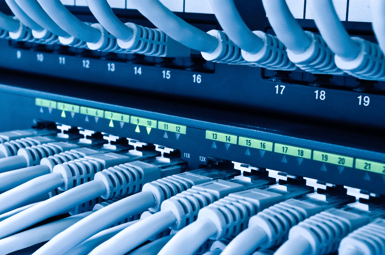 A common misconception about power surges is that devices are only at risk during extreme weather, but power surges can happen at any time without warning. According to the Insurance Institute for Business and Home Safety, lightning strikes account for just two percent of all surge protection damage. That means that 98% of the damage is done by the hundreds of power surges that are mostly unnoticed every day.
A common misconception about power surges is that devices are only at risk during extreme weather, but power surges can happen at any time without warning. According to the Insurance Institute for Business and Home Safety, lightning strikes account for just two percent of all surge protection damage. That means that 98% of the damage is done by the hundreds of power surges that are mostly unnoticed every day.
These surges could be the result of something as simple as your air conditioner cycling on or off. They could also be caused by something much farther away - for example, when electrical power plants are connected or disconnected from the grid, which happens frequently as power needs change during the course of a day. Whether caused by internal or external factors, power surges are not something to be taken lightly.
Both weather and non-weather related surges can happen quickly - often, only a few milliseconds - but if your equipment isn't properly connected, that tiny sliver of time could end up costing a lot of money. Power surges can cause three kinds of losses for your business: destruction of equipment, degradation of equipment and downtime while the equipment is out of service. Of these three, destruction is the most dramatic outcome, and usually the main concern people have. Certainly, sensitive equipment can be costly, but electronics have become far more affordable than ever before, and it is unlikely that the cost of a new computer will do significant harm to most businesses. From a business perspective, the potential loss of data and downtime could be far more costly than the cost of the damaged equipment.
While most power surges go unnoticed, they remain dangerous for your systems. Repeated surges degrade your equipment, shortening their lifespans and increasing the number of glitches. Without proper surge protection, this gradual degradation decreases the life of every piece of connected equipment, a situation which can be extremely costly on an ongoing basis.
Destruction of your equipment might seem like the most expensive result of surges, but research points to downtime as the costliest outcome, because it includes not only lost productivity but also potential loss of customer confidence or business due to the surge. In case such as a surveillance camera not picking up criminal activity or an e-commerce business suffering a failed server, the downtime is worse than the damage to the equipment in several ways.
This is especially true in the age of social media, where customers can broadcast anything at any time. If a customer complains about a website being down for a few hours, the negative sentiment on social media can be detrimental to your business for an extended time.
Investing in surge protection for your devices requires a little bit of proactive thinking but can save your company time and money, while helping prevent the chance of angry customers. There are many surge protector models that are designed for specific applications, from fire alarms to IP networks to HVAC systems and more. If you are unsure about the right device for your business need, check out DITEK's Application Guides.


.png?width=58&height=58&name=X_logo_2023_(white).png)
